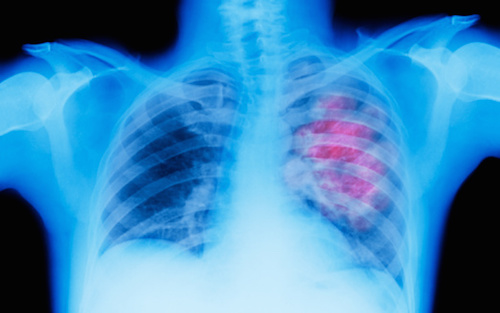
A new article in the Journal of Thoracic Oncology argues that the current evidence is insufficient to support lung cancer screening for individuals who have never smoked, even if they have a family history of lung cancer. The piece highlights the complexities involved in public health policy regarding cancer screening.
Lung cancer, the leading cause of cancer-related deaths globally, presents a daunting challenge to healthcare systems worldwide. The survival rate for lung cancer improves significantly when the disease is detected early, and low-dose computed tomography (CT) screening has been a crucial tool in identifying early-stage lung cancer. However, recent studies, especially from Asia, have ignited a debate about the benefits and potential harms of extending these screening programs to non-smokers and those with minimal smoking histories.
Results of The Early Detection Program for Lung Cancer in Taiwan revealed that the cancer detection rate for those screened with low-dose CT was more than twice as high in light- or never-smokers with a family history of lung cancer compared to high-risk individuals with more than 30 pack-years of smoking exposure, who met the U.S. Preventative Services Task Force criteria. This finding has led some to advocate for broader screening programs.
However, the JTO paper’s authors caution against such a move without robust evidence from randomized controlled trials. “The level of evidence when you institute a public policy of healthcare has to be higher,” says senior author Gerard A. Silvestri, MD, the Hillenbrand Professor of Thoracic Oncology at the Medical University of South Carolina. “You are exposing a population to the risk, most of which, in fact, 99% of which, will never see that benefit and can only be harmed.”
Silvestri outlines several potential harms associated with widespread lung cancer screening, particularly for low-risk populations:
- Unnecessary Surgeries: Perhaps the most significant harm is the risk of unnecessary surgeries, according to Silvestri. He notes that “one in five surgeries for detected lung abnormalities turn out to be for benign disease.” This not only poses a physical risk but also contributes to the emotional and financial burden on patients and healthcare systems.
- Psychological Impact: The emotional and psychological burden of a cancer diagnosis, even if it turns out to be a false alarm, can be significant. Silvestri shared a personal anecdote to illustrate this point: “My wife had four breast biopsies that turned out to be nothing, but I can assure you that the psychological harm to our family was significant,” he adds. “The weeks after those biopsies were being taken led to considerations of significant medical treatments.”
- Radiation Exposure: While the risk from the low-dose radiation used in CT scans is generally considered minimal, it is not negligible, especially when combined with other sources of radiation exposure, such as annual mammograms for women.
Given these potential harms, Silvestri and his colleagues advocate for randomized controlled trials to assess the true benefit of lung cancer screening in low-risk populations. “The trial that has to be done is a randomized controlled trial, randomly assigning these women to a CT screen versus no screen at all and following them for a number of years,” he explains.
Without such trials, there is a risk of diagnosing and treating cancers that might never have caused harm. Overdiagnosis, the authors conclude, can lead to unnecessary treatments and surgeries, which carry their own risks and complications.
The debate over lung cancer screening is part of a larger conversation about the role of screening in public health. “We are definitely not anti-screeners,” Silvestri emphasizes. While screening can undoubtedly save lives, the authors emphasize that it must be approached with caution and grounded in solid evidence. Silvestri highlights the need for a nuanced understanding of the benefits and risks, both among healthcare providers and the general public.
“There’s a huge difference between cancer detection and cancer fatality,” he says. “You might detect a cancer, but it might have been a cancer that would have never caused some disease.” Just as many prostate cancers grow slowly and do not cause harm during a man’s lifetime, Silvestri says the same may be true for some lung cancers, particularly those detected in low-risk populations.
The authors call for more research and careful consideration of public health policies is a timely reminder of the complexities involved in cancer screening.
“We all believe in screening,” Silvestri emphasizes. “But what we should be looking at is not just a shift in seeing all the stage one cancers, but a reduction in stage four cancers. You can’t prove that without a randomized trial.”













